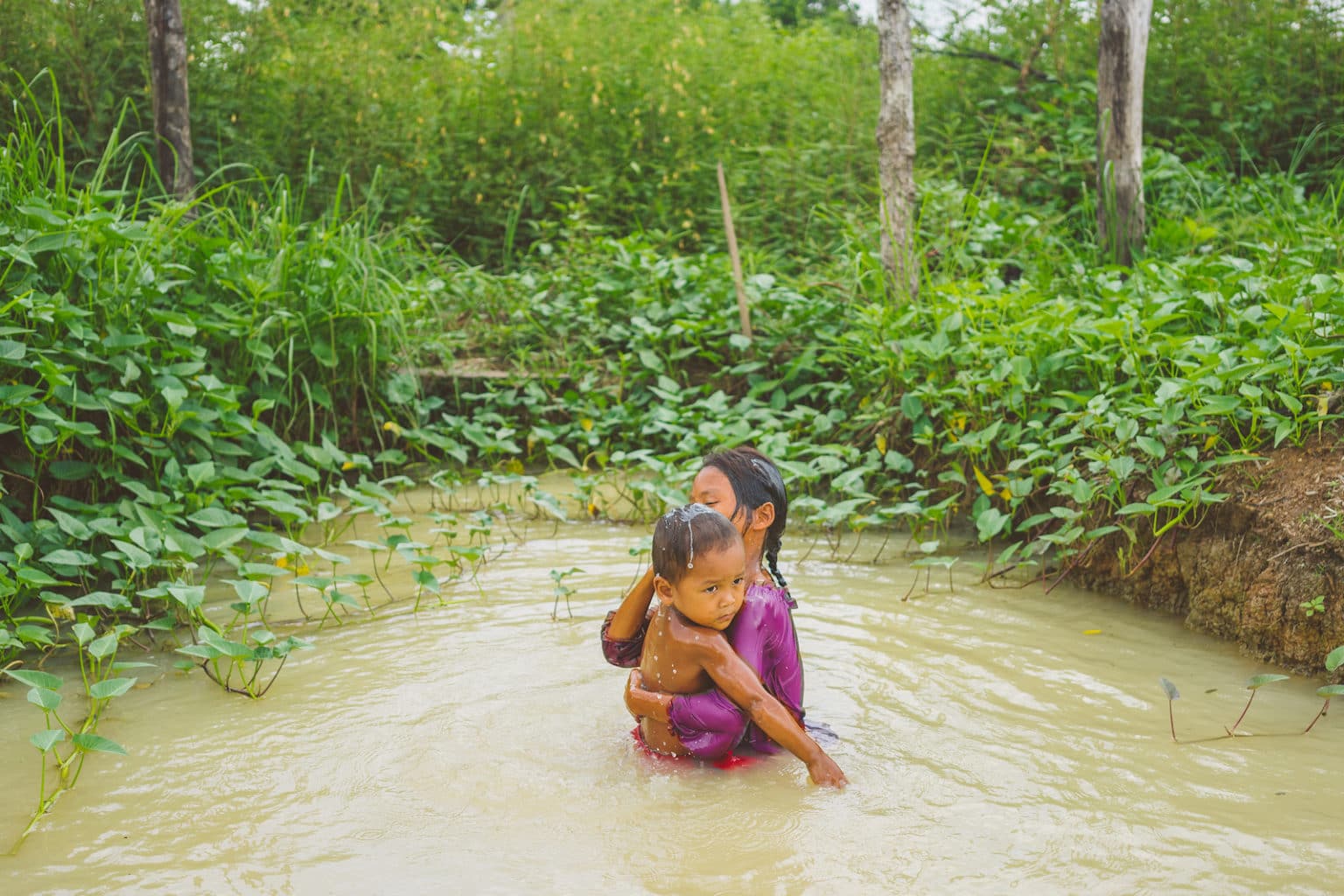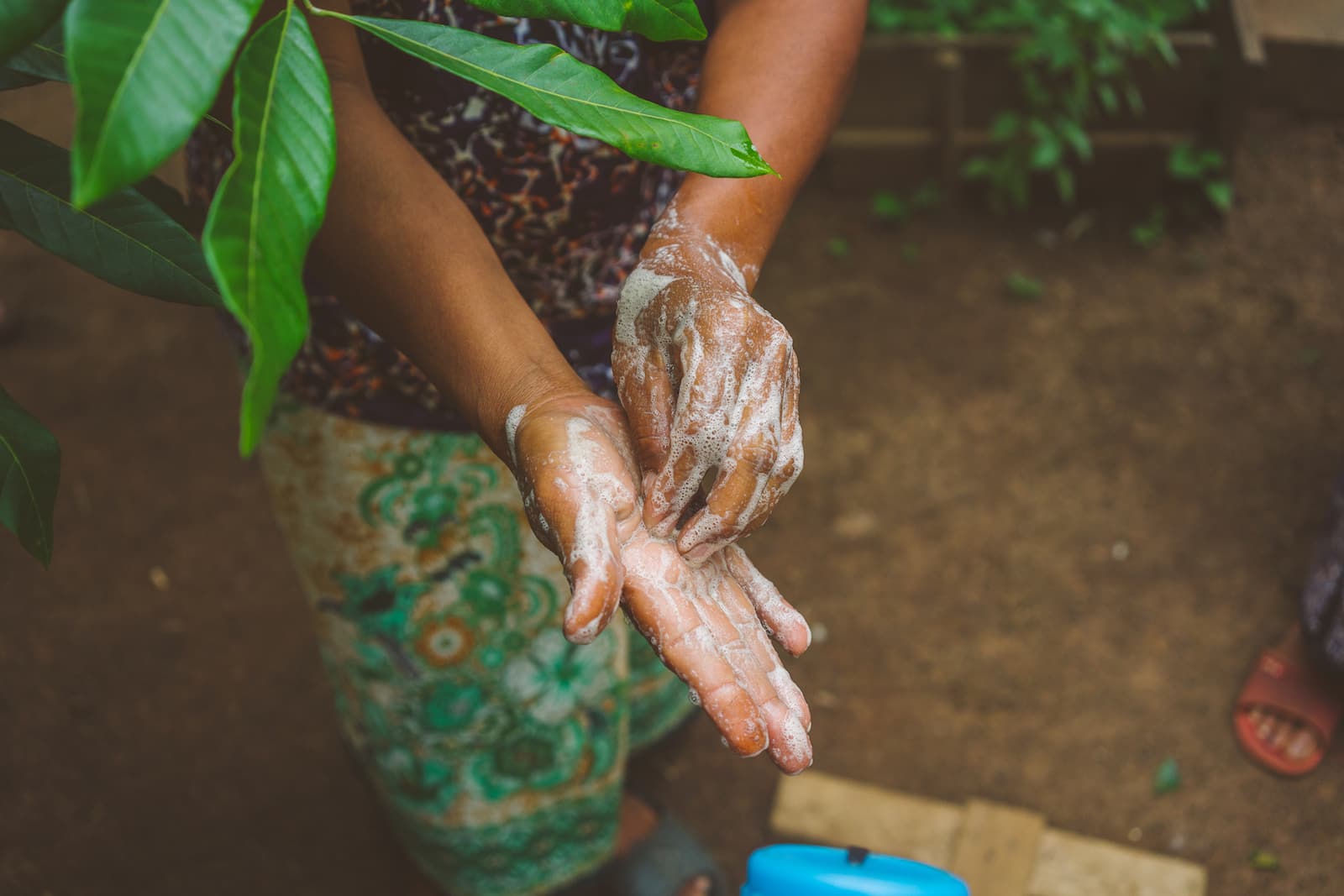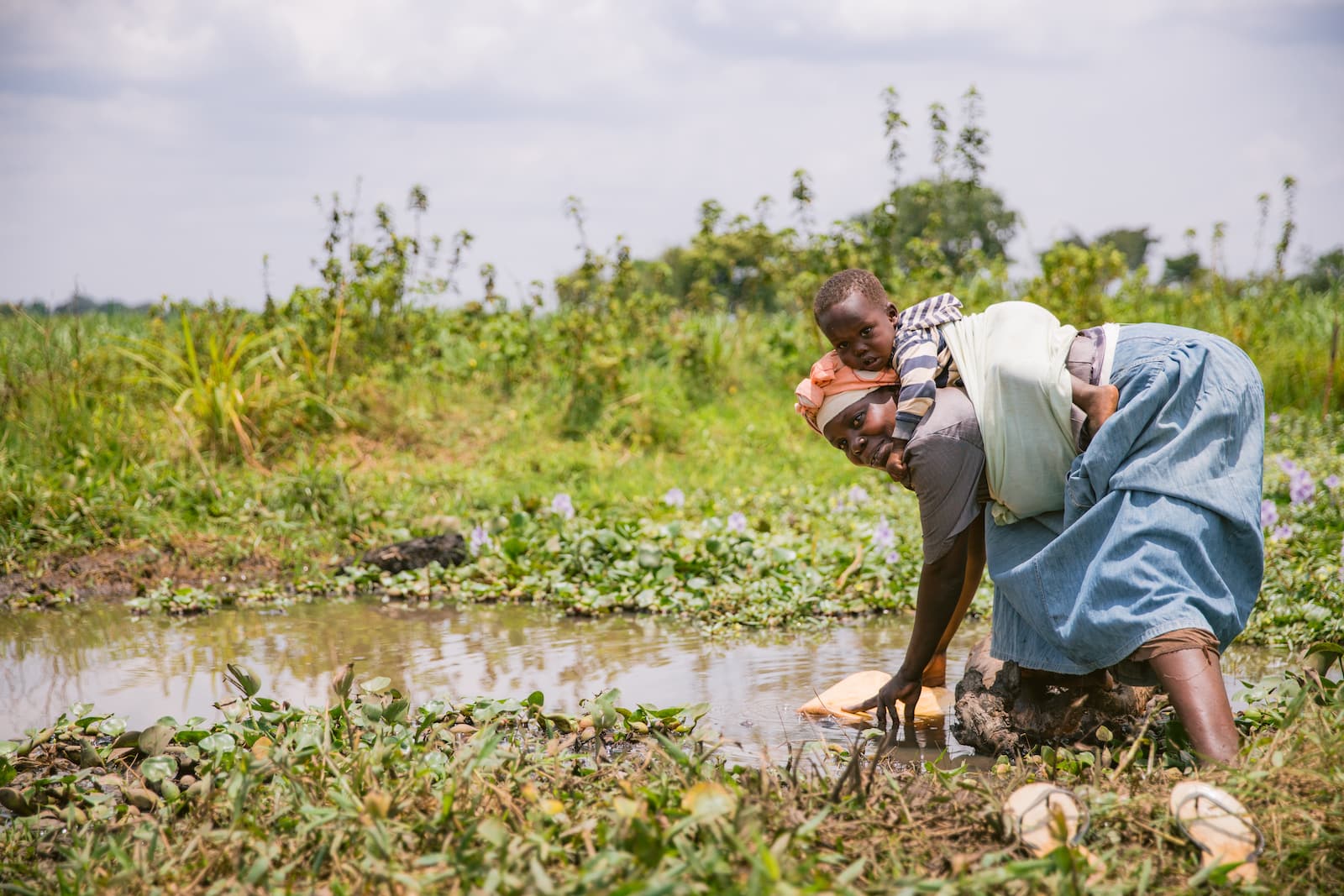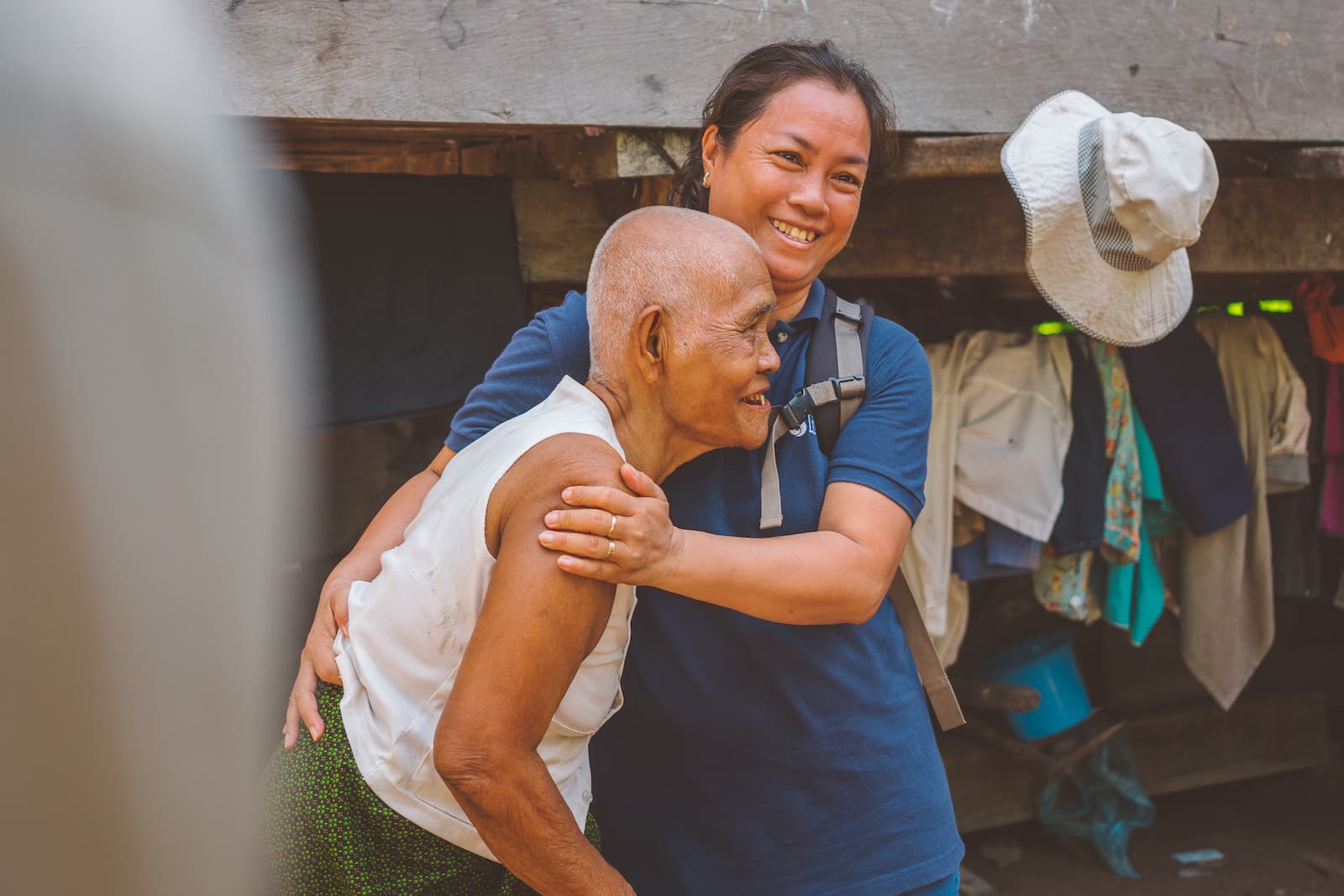Which of the Following Organisms Can Cause Water-borne Diarrheal Disease?
Each year, waterborne diseases agonize hundreds of millions of people, primarily those living without prophylactic, accessible h2o in developing countries.
Of the seven most common waterborne diseases in the world, diarrhea is the primal symptom. The latest research shows that diarrhea is the 2d leading cause of death for children under the age of five, causing more childhood deaths than malaria, AIDS, and measles combined.
That's hundreds of thousands of deaths, simply there is promise for the future. Experts believe nosotros can finish the global water and sanitation crisis in our lifetime.
What are Waterborne Diseases?
Waterborne diseases are illnesses acquired by microscopic organisms, like viruses and leaner, that are ingested through contaminated water or past coming in contact with feces.
If every person on the planet was able to exercise rubber sanitation and hygiene and have access to make clean water, these diseases would non exist. Governments, NGOs, and communities themselves have made great strides in the past 20 years to end waterborne diseases. Nevertheless, there is much to be done.
Larn most seven waterborne diseases and help prevent them today.
-
Typhoid Fever
Although rare in industrialized countries, typhoid fever is well-known in extremely poor parts of developing nations; it's estimated that upwards to twenty million people worldwide suffer from the disease each twelvemonth. It's spread through contaminated nutrient, unsafe water, and poor sanitation, and it is highly contagious.

Symptoms include:
- A fever that increases gradually
- Muscle aches
- Fatigue
- Sweating
- Diarrhea or constipation
Prevention and Treatment
Vaccines are recommended for people who are traveling in areas where poor sanitation and unsafe water are common. The vaccine can exist injected via a shot or taken orally for a number of days. To forestall it, refrain from drinking whatever water that isn't bottled and sealed, and do not swallow food from villages or street vendors. Typhoid is treated with antibiotics.
GIVE Prophylactic WATER WITH LIFEWATER INTERNATIONAL >
-
Cholera
Cholera is normally establish in humanitarian emergencies or marginalized villages where poverty and poor sanitation are rampant. The affliction is spread through contaminated h2o and causes severe dehydration and diarrhea. Cholera tin can be fatal within days or even hours of exposure to the leaner, simply just 1 in 10 people will develop life-threatening symptoms.
Symptoms include:
- Nausea
- Vomiting
- Diarrhea
- Muscle cramps
Prevention and Treatment
Cholera is a waterborne disease that'south easily prevented when traveling. Launder your hands oft, only eat foods that are completely cooked and hot (no sushi), and only swallow vegetables you tin can pare yourself, like avocados, bananas, and oranges. Of grade, drinkable safety h2o.

When handwashing in unavailable, cholera tin can impact an entire hamlet. In developing countries similar Ethiopia, information shows that 40 percent of households do not accept ways to wash their hands properly, meaning they don't have safe water, lather, and a facility to wash. This makes hygiene management and illness prevention almost impossible for these communities.
Lifewater helps prevent cholera in remote villages by teaching families how to construct their own handwashing devices. To date, 5,970 homes in Federal democratic republic of ethiopia lone have built their own handwashing station (chosen a "tippy tap") using locally-sourced materials.
-
Giardia
This waterborne illness is shared through contaminated water, almost frequently in ponds and streams, simply it tin can also exist found in a town's water supply, swimming pools, and more than. The infection is acquired by a parasite and typically clears upward afterward a few weeks. However, it's possible for those who have been exposed will feel intestinal problems for years to come.
Symptoms include:
- Intestinal pain
- Cramps and bloating
- Diarrhea
- Nausea
- Weight loss
Prevention and Handling
While at that place is no vaccine for giardia, there are simple ways to avoid the infection. Wash your hands with soap frequently, don't swallow water while swimming, and drink but bottled water.
With time, the immune arrangement will typically beat giardia on its own. But, if symptoms worsen, doctors prescribe anti-parasite and antibody medications.
Water-poor communities cannot protect themselves from illnesses like giardia, and handling for this illness can come up at a high cost for a family living in poverty. For these reasons, Lifewater'due south programs focus on long-term prevention. This includes constructing rubber water sources and teaching health practices, one firm at a time, until the entire community has the resources and the cognition to prevent waterborne illness.
GIVE Condom WATER WITH LIFEWATER TODAY >

When families acquire how to construct their own handwashing facilities, bathrooms, and dish drying racks, they take command of their health. They check off a listing of basic health practices, and they become certified Lifewater "Healthy Homes."
-
Dysentery
An intestinal infection, dysentery is a waterborne disease characterized by astringent diarrhea equally well every bit blood or mucus in the stool. Dysentery is good reason to always wash your hands, equally the affliction is spread mainly through poor hygiene. It can be caused by leaner, viruses, or parasites in unsafe food and water and past people coming in contact with fecal thing. If someone experiencing dysentery cannot supersede fluids quickly enough, their life could be at risk.
Symptoms include:
- Stomach cramps and pain
- Diarrhea
- Fever
- Nausea
- Vomiting
- Dehydration
Prevention and Treatment
To prevent dysentery, wash your easily with soap often, order all drinks without ice, don't eat food sold by street vendors, and simply eat fruits you can pare. Beverage merely sealed, bottled water while traveling in places with higher dysentery risk, such equally communities where proper hygiene practices are uncommon.
Mild dysentery commonly clears up with residuum and fluids, but over-the-counter medications such as Pepto-Bismol can help with stomach cramping. More than astringent cases tin can exist treated with antibiotics, although some strains of the disease are resistant.
READ THE 2022 GLOBAL WATER AND SANITATION UPDATE >
-
Escherichia Coli (E. coli)
E. coli is a bacteria with diverse strains, some dangerous and some beneficial. For instance, East. coli bacteria is of import in creating a salubrious intestinal tract.
However, if animal waste product has found its way into farmland where produce is grown or if strains of E. coli are spread through the procedure of making ground beef, those who consume these foods could experience symptoms of the waterborne affliction. The bacteria is likewise found in unsafe water sources around the globe where human water sources and cattle coexist.
Symptoms of unsafe strains of East. coli are like to that of dysentery and other waterborne diseases. Most bouts of E. coli pass within a week, simply older people and immature children accept a greater chance of developing life-threatening symptoms. Anyone believed to accept been exposed to contaminated food or water should contact a doctor if diarrhea contains blood.
Prevention and Treatment
As always, avoid water maybe contaminated by human and/or animal feces (like ponds, rivers, and swamps). If you are going to consume footing beef, cook thoroughly. Wash fruits and vegetables well, wash easily often, and potable only prophylactic water.
To treat the affliction, drinkable plenty of safe water, remainder, and take over-the-counter diarrheal medication.
While these are elementary prevention and treatment tips, there are many remote communities in Republic of uganda who have no choice but to potable from swamps.

Lifewater staff are serving the village of Kikomera Biri, Uganda, where families get together water from a swamp. The results of h2o testing showed an extremely high adventure for dangerous pathogens like typhoid, harmful strains of Eastward. coli, and other waterborne diseases. Unless this customs—which is already experiencing farthermost poverty—pays for a taxi to drive into town for expensive, bottled h2o, they have no option but to keep drinking from the swamp.
Thankfully, a new safety h2o source for all 299 residents is planned for construction this year.
-
Hepatitis A
Hepatitis A is a liver infection acquired by consuming contaminated food and water or by coming in close contact with someone who has the infection. People who travel in developing countries oft or work in rural communities with poor sanitation and hygiene direction are most exposed to the illness.
Symptoms include:
- Fatigue
- Clay-colored bowel movements
- Jaundice
- Nausea and vomiting
- Abdominal hurting, especially near your liver
- Loss of ambition
- Sudden fever
The infection normally goes away in a few weeks, but it'due south possible that it can become severe and concluding several months.
Prevention and Treatment
The best way to forestall hepatitis A is by getting the vaccine. Eat only foods that are thoroughly cooked and served hot, and avert eating anything at room temperature. Only consume fruit that you can peel and that you have peeled yourself. Don't swallow from food vendors and don't swallow runny eggs or raw/rare meat. For a total list of dos and don'ts, visit the CDC's page on Hepatitis A here.
Once a person has hepatitis A, they build an immunity and volition probable never get it again. Still, the symptoms are serious, oft forcing people to accept time off work or school to recover. If y'all have contracted hepatitis A, rest, avoid drinking booze, and drink enough of fluids. The disease will run its course, and full recovery is expected after 3 months.
END WATERBORNE DISEASES WITH LIFEWATER TODAY >
-
Salmonella
Most cases of salmonella come from ingesting nutrient or h2o contaminated with feces. Undercooked meat, egg products, fruits, and vegetables tin can also carry the disease. Most people don't develop complications, only children, pregnant women, older adults, and people with weakened immune systems are nigh at risk.
Symptoms include:
- Claret in stool
- Chills
- Headache
- Diarrhea
Prevention and Treatment
When preparing your own food, make sure to melt thoroughly and shop or freeze within thirty minutes of utilize. Avoid touching birds or reptiles, and as e'er, wash your hands frequently.
Salmonella infection dehydrates the body. Treat it by drinking fluids and electrolytes. More serious infections can crave hospitalization and antibiotics.
Prevent Waterborne Diseases for Good: Give with Lifewater
There are many parts in the world where waterborne diseases are rampant, deadly, and cognition about prevention is not widely available. For over 40 years, Lifewater has sought out these places, working with communities to teach vital sanitation and wellness practices and amalgam custom h2o technologies in places where water access is near hard.
Over and over over again, cholera is prevented and typhoid eradicated. Children no longer battle waterborne disease, and parents go back to piece of work.

When you go a monthly giving partner with Lifewater, you give condom water to i person for life every month. Or, give one time. Every gift changes lives. You'll receive existent-time updates on progress and photos to share with friends and family. You tin eliminate waterborne diseases for practiced. Give today.
Stop WATERBORNE DISEASES WITH LIFEWATER TODAY >
brewsterthile1952.blogspot.com
Source: https://lifewater.org/blog/7-most-common-waterborne-diseases-and-how-to-prevent-them/
0 Response to "Which of the Following Organisms Can Cause Water-borne Diarrheal Disease?"
Post a Comment